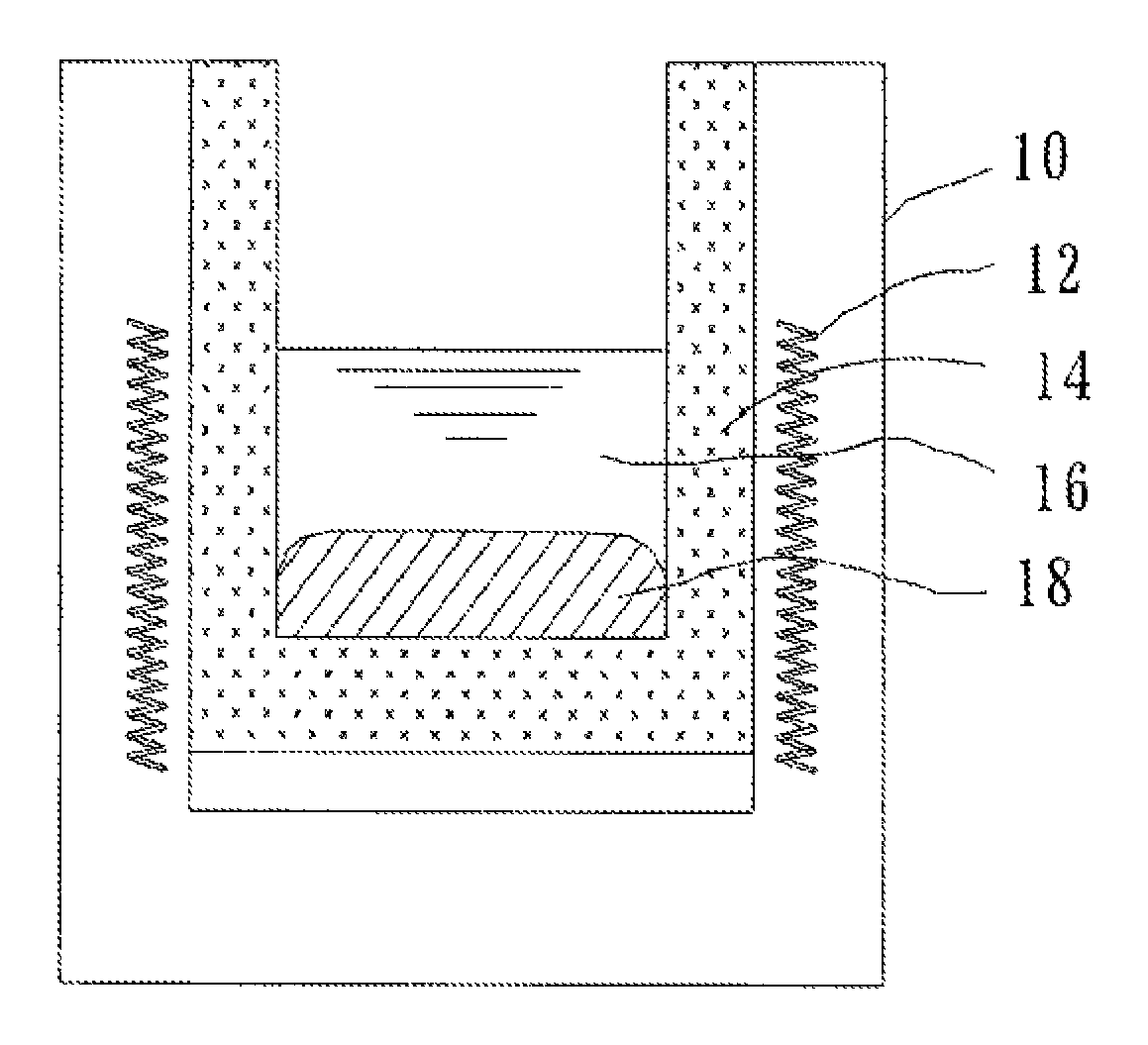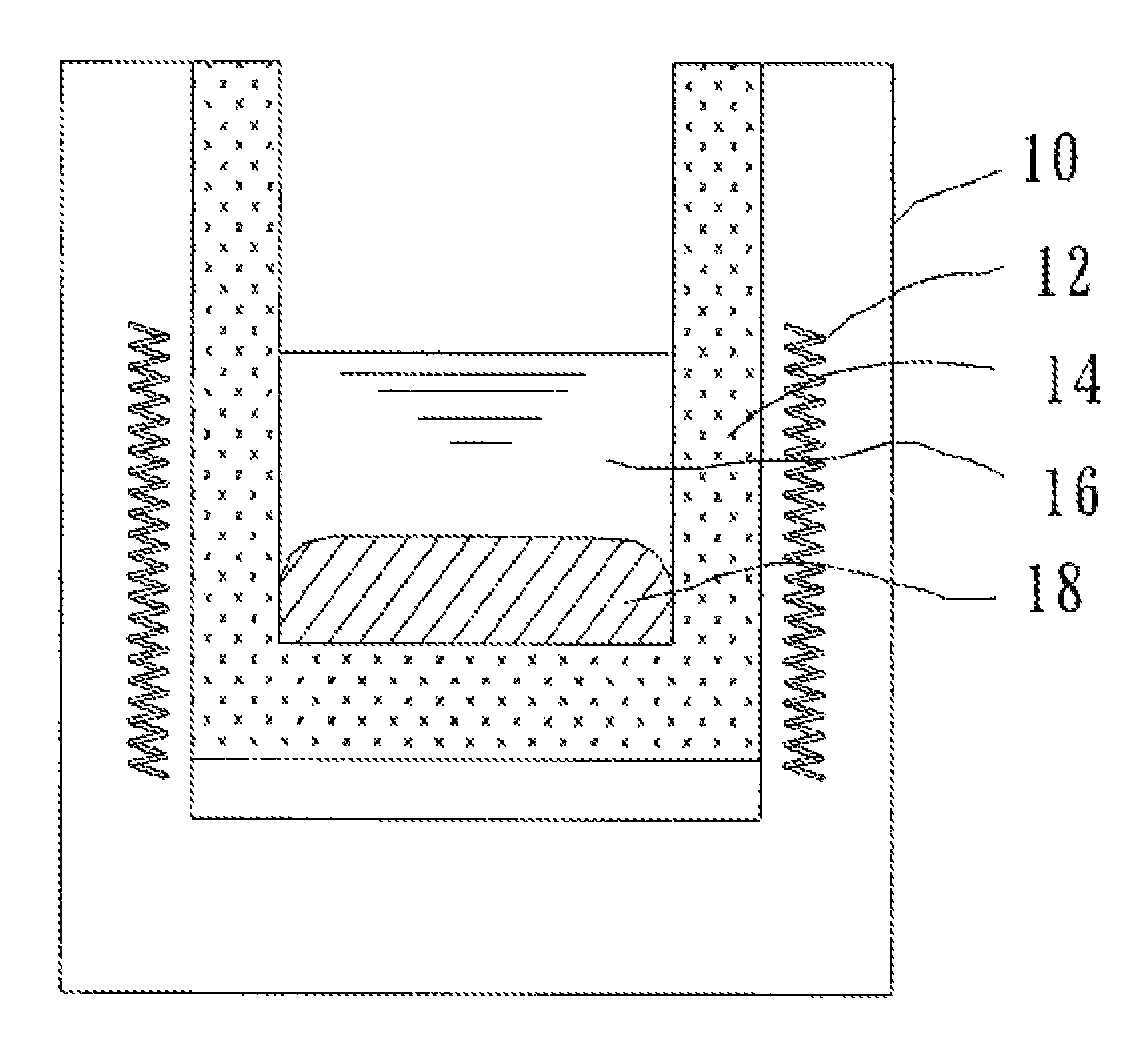Al—Sc alloy manufacturing method
a technology of sc alloy and manufacturing method, which is applied in the field of al—sc alloy manufacturing method, can solve the problems of difficult reduction of metal sc from scandium compound (sc compound) such as sc halide or sc chalcogenide, and the use of sc in extremely limited applications, so as to reduce the risk of molten salt consumption and environmental contamination, easy and simple production steps, and easy improvement of economic efficiency
- Summary
- Abstract
- Description
- Claims
- Application Information
AI Technical Summary
Benefits of technology
Problems solved by technology
Method used
Image
Examples
example 1
[0050]A metal fluoride salt obtained by mixing LiF and NaF in amounts as shown in Table 1 was loaded into a reaction vessel, and heated to 960° C. to be melted, thus forming a molten salt layer. Next, metal Al in an amount as shown in Table 2 was loaded into the reaction vessel, and was melted to form a molten metal layer. The molten salt layer and the molten metal layer were present in the reaction vessel under a state in which the molten metal layer and the molten salt layer were separated from each other as a lower layer and an upper layer, respectively, and were in contact with each other.
[0051]Further, while the reaction vessel was maintained at 960° C., 0.080 mole of Sc2O3 was loaded therein as a Sc compound as shown in Table 2 and dissolved in the molten salt layer. Thus, a reaction system of the reaction formula (1) was constructed. The reaction system was maintained at 960° C. for 180 minutes while being stirred to the extent that the molten metal layer was not brought into...
example 2
[0053]The same procedures as in Example 1 were performed except that, after constructing the reaction system by the same manner as in Example 1, the reaction system was maintained at 960° C. for 15 minutes and then cooled to 760° C., and after that, was maintained at 760° C. for 180 minutes while being stirred to the extent that the molten metal layer was not brought into contact with air, thereby conducting the chemical reaction of the reaction formula (1).
[0054]After the completion of the reaction, the molten metal layer was collected and analyzed by the same manner as in Example 1. As a result, it was found that the molten metal layer included 0.070 mole of Sc, which corresponded to an Al-1.74 mass % Sc alloy as compared to an Al amount, and the value of (FSc−CSc) / PSc was 0.878, as shown in Table 3. At the completion of the chemical reaction, solid Al2O3 was generated on the upper surface of the molten salt layer.
example 3
[0055]The reaction was conducted under the same conditions as in Example 1 except that: the molten salt layer was used in half an amount of that in Example 1; metal Al was used in the same amount as that in Example 1; and Sc2O3 was used as a Sc compound in half an amount of that in Example 1. The resultant molten metal layer was collected and analyzed. As a result, it was found that the molten metal layer included 0.027 mole of Sc, which corresponded to an Al-0.68 mass % Sc alloy as compared to an Al amount, and the value of (FSc−CSc) / PSc, was 0.339, as shown in Table 3. At the completion of the chemical reaction, solid Al2O3 was generated on the upper surface of the molten salt layer.
PUM
| Property | Measurement | Unit |
|---|---|---|
| temperature | aaaaa | aaaaa |
| temperature | aaaaa | aaaaa |
| melting temperature | aaaaa | aaaaa |
Abstract
Description
Claims
Application Information
 Login to View More
Login to View More - R&D
- Intellectual Property
- Life Sciences
- Materials
- Tech Scout
- Unparalleled Data Quality
- Higher Quality Content
- 60% Fewer Hallucinations
Browse by: Latest US Patents, China's latest patents, Technical Efficacy Thesaurus, Application Domain, Technology Topic, Popular Technical Reports.
© 2025 PatSnap. All rights reserved.Legal|Privacy policy|Modern Slavery Act Transparency Statement|Sitemap|About US| Contact US: help@patsnap.com


